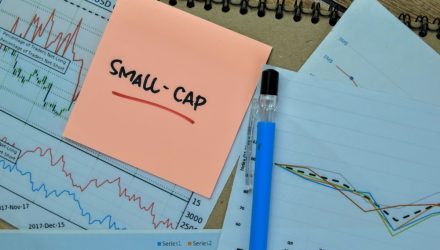One potential benefit of small-cap equities lagging large-cap rivals this year is that a clear value proposition is developing with the former. By some estimates, the valuation chasm between small- and large-cap stocks is as wide as it’s been in two decades. That could signal opportunity with exchange traded funds such as the ALPS O’Shares US Small-Cap Quality Dividend ETF (OUSM).
OUSM, which follows the O’Shares U.S. Small-Cap Quality Dividend Index, leans into the value opportunity with its dividend mandate as well as a combined weight of 44.55% to financial services and industrial stocks. These are two clear value sectors.
More OUSM Benefits
OUSM’s status as a dividend ETF is potentially advantageous for investors in the current market environment. This is because some of the primary drivers of small-cap performance are lumpy today. Dividends can mitigate some of that volatility.
“Domestic growth and valuations are the two largest drivers of small-cap equity performance, explaining roughly two-thirds of Russell 2000 Index returns in our estimate. In an environment of resilient U.S. growth, we turn our attention to valuations, which currently screen cheap relative to expensive large-cap counterparts,” noted Goldman Sachs Asset Management (GSAM).
OUSM’s emphasis on high-quality, low volatility dividend-paying companies is important for reasons beyond the obvious benefit of income. Many companies, particularly smaller firms, that deliver dividends are profitable. This is a trait that’s not always easy to locate in the small-cap space.
“Profitable companies in the Russell 2000 Index, making up roughly two-thirds of the index, currently trade at a –33% discount to the S&P 500, relative to the long-term average premium of 2%,” added GSAM. “In our view, improving U.S. growth sentiment, alongside historically low relative valuations of cash-flow-positive companies, make small-cap equities an attractive alternative to large-cap peers trading at already full valuations.”
Home to $350 million in assets under management, OUSM turns seven years old in December. While past performance isn’t a guarantee of future returns, the fund’s track record is impressive. Since inception, OUSM has easily outpaced the Morningstar US Small-Cap Broad Value Extended Index and the Russell 2000 Value Index. That could be a sign that, when accounting for the dividend perk, OUSM could be useful to long-term investors. Plus, the ETF has the benefit of stock-level diversification on its side.
“Small-cap equities are less vulnerable to a top-heavy market, helping reduce the index’s sensitivity to individual company performance. The Russell 2000 Index outperformed the S&P 500 by 727 bps and 509 bps, annually, in the three years following past periods of peak concentration in the S&P 500,” concluded GSAM.
For more news, information, and analysis, visit the ETF Building Blocks Channel.








